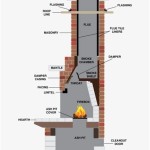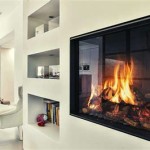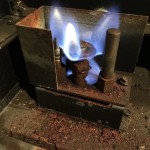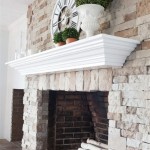Natural Stone Tile Fireplace Design: A Comprehensive Guide
Fireplaces have long been recognized as central features in homes, offering warmth, ambiance, and a focal point for gatherings. Among the various materials available for fireplace design, natural stone tile stands out due to its inherent beauty, durability, and versatility. The use of natural stone tile in fireplace design allows for a wide range of aesthetic expressions, from rustic and traditional to modern and minimalist.
This article provides a comprehensive guide to natural stone tile fireplace design, covering aspects such as material selection, design considerations, installation techniques, and maintenance practices. The information presented aims to equip homeowners and designers with the knowledge necessary to create a stunning and enduring fireplace feature that complements the overall architectural style of the living space.
Selecting the Right Natural Stone Tile
The selection of natural stone tile is a critical step in fireplace design, as the type of stone significantly impacts the overall aesthetic and performance of the fireplace. Several factors should be considered during this selection process, including the color, texture, pattern, and durability of the stone.
Types of Natural Stone: Common types of natural stone used in fireplace designs include:
Granite: Known for its exceptional durability and resistance to heat, granite is a popular choice for fireplace surrounds. It is available in a wide variety of colors and patterns, ranging from subtle to dramatic. Granite is a relatively dense and non-porous stone, making it resistant to staining and easy to clean.
Marble: Marble offers a luxurious and elegant appearance, with its characteristic veining and polished surface. While beautiful, marble is more porous than granite and may require sealing to prevent staining. Its heat resistance is also slightly lower than that of granite, making it more suitable for decorative fireplace surrounds rather than surfaces directly exposed to high heat.
Limestone: Limestone provides a warm and inviting feel with its natural textures and earthy tones. It is a softer stone than granite or marble and is more susceptible to scratching and staining. However, its natural beauty and versatility make it a popular choice for rustic and traditional fireplace designs.
Slate: Slate offers a distinctive look with its layered texture and natural clefting. It is a durable and relatively low-maintenance stone, making it suitable for high-traffic areas around the fireplace. Slate is also relatively heat-resistant and can withstand the temperature fluctuations associated with fireplace use.
Travertine: Travertine is characterized by its unique pitted surface and warm, earthy tones. It often features natural variations in color and texture, adding character and visual interest to fireplace designs. Travertine requires regular sealing to prevent water absorption and staining.
Considerations for Stone Selection:
Heat Resistance: The ability of the stone to withstand high temperatures and thermal shock is a crucial factor, particularly for areas directly exposed to the fire. Granite and slate are generally considered the most heat-resistant options.
Porosity: The porosity of the stone affects its susceptibility to staining and water damage. Porous stones like limestone and travertine require regular sealing to maintain their appearance and prevent deterioration.
Durability: The durability of the stone determines its resistance to scratching, chipping, and wear. Granite and slate are generally the most durable options, while marble and limestone are more prone to damage.
Aesthetic: The aesthetic of the stone should complement the overall style of the room. Consider the color, texture, and pattern of the stone in relation to the existing decor and architectural features.
Cost: Natural stone tile can vary significantly in price, depending on the type of stone, its origin, and its availability. It is important to establish a budget and choose a stone that fits within those financial constraints.
Design Considerations for Natural Stone Tile Fireplaces
The design of a natural stone tile fireplace should be carefully considered to ensure that it not only meets the functional requirements of providing heat and ambiance but also complements the overall aesthetics of the living space. Several design elements play a crucial role in creating a visually appealing and well-integrated fireplace.
Scale and Proportion: The size and proportions of the fireplace should be appropriate for the size of the room. A fireplace that is too large can overwhelm the space, while one that is too small may appear insignificant. Consider the height of the ceiling, the width of the wall, and the overall layout of the room when determining the appropriate dimensions for the fireplace.
Style and Aesthetics: The style of the fireplace should align with the overall architectural style of the home. Traditional homes may benefit from fireplaces with ornate details and classic stone like marble or limestone. Modern homes often feature fireplaces with clean lines and minimalist designs, using materials like granite or slate.
Layout and Configuration: The layout of the stone tiles can significantly impact the overall appearance of the fireplace. Common layout options include:
Stacked: Tiles are arranged in a simple, linear pattern, creating a clean and contemporary look.
Running Bond: Tiles are offset, creating a staggered pattern that adds visual interest.
Herringbone: Tiles are arranged in a V-shaped pattern, creating a classic and elegant look.
Random: Tiles of varying sizes and shapes are arranged in a seemingly random pattern, creating a rustic and natural look.
Color and Texture: The color and texture of the stone tile should be carefully considered to create the desired effect. Warm tones like beige and brown can create a cozy and inviting atmosphere, while cool tones like gray and white can create a more modern and sophisticated look. The texture of the stone can also add depth and visual interest to the fireplace.
Firebox Opening: The size and shape of the firebox opening should be proportionate to the overall fireplace design. A large firebox opening can create a dramatic focal point, while a smaller opening may be more appropriate for smaller rooms.
Mantel and Hearth: The mantel and hearth are important elements in fireplace design. The mantel provides a surface for displaying decorative items, while the hearth provides a safe and functional area in front of the firebox. The materials used for the mantel and hearth should complement the stone tile and the overall style of the fireplace.
Lighting: Proper lighting can enhance the beauty of the natural stone tile and create a warm and inviting atmosphere. Consider installing recessed lighting above the fireplace or accent lighting to highlight the texture and color of the stone.
Installation and Maintenance of Natural Stone Tile Fireplaces
Proper installation and maintenance are crucial for ensuring the longevity and beauty of a natural stone tile fireplace. The installation process requires careful attention to detail and adherence to industry best practices. Regular maintenance is essential for preventing damage and preserving the appearance of the stone.
Installation Process:
Preparation: The surface to which the stone tile will be applied must be clean, level, and structurally sound. Remove any existing finishes or debris and repair any cracks or imperfections. If the fireplace is being installed over a combustible surface, such as wood framing, it is necessary to install a non-combustible backing material, such as cement board.
Adhesive: Use a high-quality thin-set mortar specifically designed for natural stone tile. Apply the mortar evenly to the back of the tile and to the prepared surface, using a notched trowel to create ridges that will enhance adhesion.
Tile Placement: Carefully place the tiles onto the mortar, ensuring that they are properly aligned and spaced. Use spacers to maintain consistent grout lines. Press the tiles firmly into the mortar to ensure good adhesion.
Cutting: Use a wet saw to cut the stone tiles to the required size and shape. Proper cutting is essential for achieving a clean and professional finish.
Grouting: After the mortar has cured, apply grout to the joints between the tiles. Choose a grout color that complements the stone tile. Remove excess grout from the surface of the tiles with a damp sponge.
Sealing: After the grout has cured, apply a sealant to the stone tile to protect it from staining and water damage. Choose a sealant that is specifically designed for natural stone tile.
Maintenance Practices:
Regular Cleaning: Clean the stone tile regularly with a mild soap and water solution. Avoid using harsh chemicals or abrasive cleaners, which can damage the stone.
Sealing: Reapply sealant to the stone tile every one to two years, or as needed, to maintain its protective properties.
Spot Cleaning: Clean up spills and stains immediately to prevent them from penetrating the stone. Use a soft cloth and a mild cleaning solution to remove the stain.
Inspection: Regularly inspect the fireplace for any signs of damage, such as cracks or loose tiles. Repair any damage promptly to prevent further deterioration.
Professional Cleaning: Consider having the fireplace professionally cleaned every few years to remove stubborn stains and buildup.
By following these installation and maintenance guidelines, homeowners can ensure that their natural stone tile fireplace remains a beautiful and functional focal point for years to come. The careful selection of materials, thoughtful design, and proper installation and maintenance will contribute to the long-term value and enjoyment of this enduring architectural feature.

Choose Natural Stones For Your Fireplace Surround Baasar

12 Stacked Stone Fireplace Ideas For Optimal Coziness

17 Modern Stacked Stone Fireplace Ideas For Your Home

Natural Stone Is The Best Choice For Your Fireplace Carmel Imports

Gas Fireplace With Natural Stone Tile Surround Mediterranean Basement Other By Denise Quade Design Houzz Au

4 Natural Stacked Stone Fireplaces For Your Dream Design

Red Hot Fireplace Ideas

11 Stone Veneer Fireplace Surround Design Trends Where To Buy

Travertine Honed Fireplace Handcrafted 100 Natural Stone Stilish Home Decor Living Room

11 Stone Veneer Fireplace Surround Design Trends Where To Buy
Related Posts








